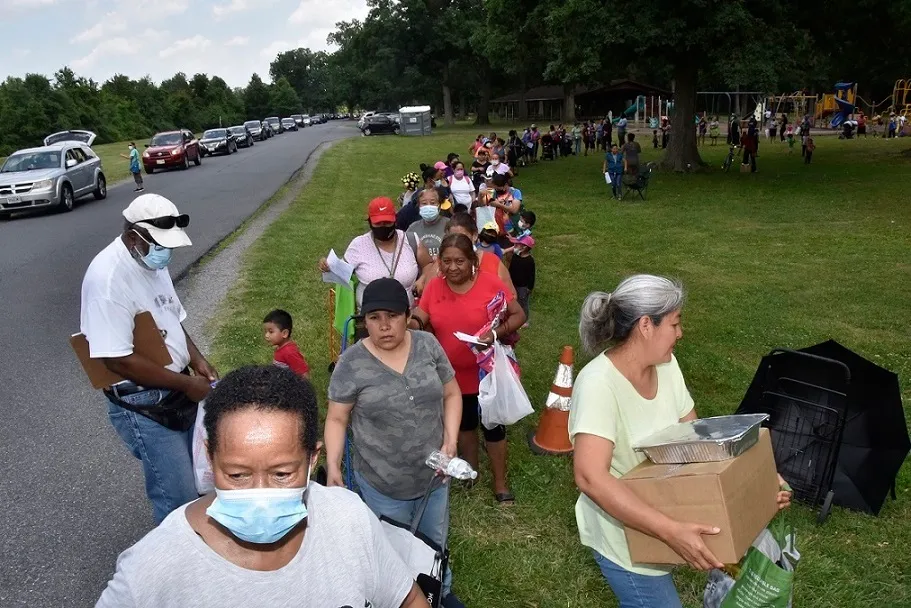Wanda Blalock arrived 105 minutes early to be the first motorist in line to receive free produce and a hot meal at Tanglewood Park in Prince George’s County.
The 67-year-old retired educator who worked with special needs children said she doesn’t mind waiting to receive food because she enjoys seeing other people.
“I sit in the house by myself with my dog,” Blalock, of Lanham, said Friday while inside her vehicle at the Riverdale park. “Seeing all these cars and people in line isn’t surprising. We need this help.”
A document released Thursday by the Capital Area Food Bank amplifies how vital that access to food remains for residents in the D.C. area. The organization’s 2022 Hunger Report said it distributed 64 million meals last year, the highest amount ever and double the levels in 2019.
In terms of food insecurity, or lack of resources to provide affordable and healthy food options, about one-third of the region experienced some level of food insecurity, according to the food bank’s survey responded by about 3,770 people ages 18 and older.
The respondents come from four jurisdictions in Virginia (the city of Alexandria and Arlington, Fairfax and Prince William counties), two counties in Maryland (Prince George’s and Montgomery) and Washington, D.C. At least all seven jurisdictions experienced at least 21% food insecurity.
Prince William County and the District tied for second in food insecurity at 36%.
The majority-Black jurisdiction of Prince George’s County ranked the highest in food insecurity at 48%.
In response to a question about financial heath — “how confident are you that you can keep up with your expenses?” — about 40% of Prince George’s residents said they were “somewhat confident.” However, 31% said they were not very confident or not at all confident.
In terms of race, 55% of respondents identifying as Hispanic and another 50% identifying as Black said they experienced food insecurity.
The report outlines several recommendations to decrease food insecurity, including:
- Increasing the minimum wage.
- Offering paid family leave.
- Expanding eligibility for programs such as the Supplemental Nutrition Assistance Program (SNAP).
In Prince George’s, officials created a task force in order to battle food insecurity in the county with various neighborhoods, specifically inside the Beltway, earmarked as food deserts.
Francine Henderson, 62, of Bowie in Prince George’s, sat inside her air-conditioned minivan with her 6-year-old granddaughter, Journey Henderson, and stared at her rearview mirror, looking at the dozens of vehicles behind her.
“I never thought we would have something like this that would shut the whole country down,” said Henderson, who receives $606 a month in Social Security but is still awaiting approval to receive disability income. “We [outside] burning gas just to wait in line for food. We should not have a problem like this. This line of cars is unbelievable.
This article was written by the Washington Informer, read more articles like this here.
Photo: Prince George’s County residents line up to receive food during a giveaway at Tanglewood Park in Riverdale, Maryland, on June 17. (Robert R. Roberts/The Washington Informer)









